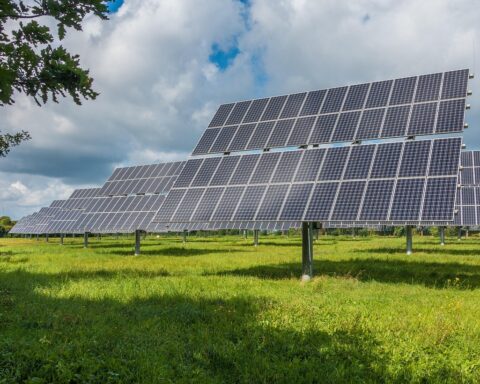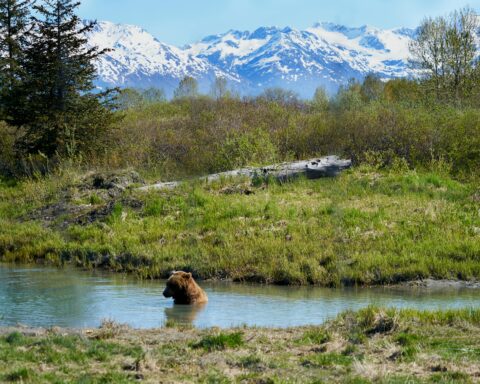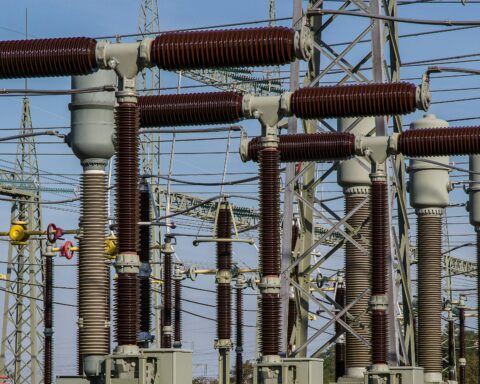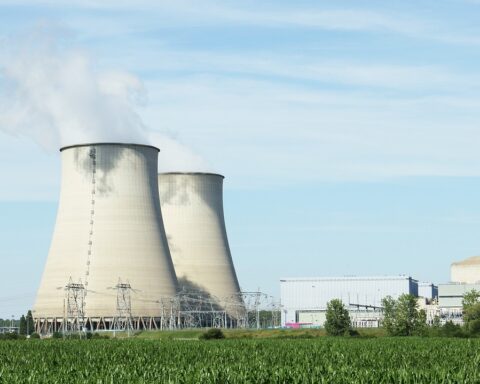As the energy grid evolves to incorporate more variable solar and wind power, hydropower will play a crucial role in maintaining grid reliability and stability. Yet a challenge facing hydropower is how to meet the increasing demand for energy while minimizing its environmental footprint.
The HydroWIRES Initiative, a project of the U.S. Department of Energy’s Water Power Technologies Office, is exploring strategies for managing water releases to achieve both energy and environmental goals, reducing the environmental impact of hydropower facilities while supporting power generation.
“There’s a legacy paradigm in hydropower that pits power generation against environmental mitigation and protection measures, but it doesn’t have to be like that. Our research shows that co-optimizing energy and environmental outcomes can lead to better outcomes in both areas,” said Brenda Pracheil, Pacific Northwest National Laboratory (PNNL) Earth scientist, fisheries biologist and lead author of a report on co-optimizing hydropower.
Hydropower is a plentiful and adaptable energy reservoir, contributing almost 30% of the nation’s utility-scale renewable energy, but the operation of hydropower facilities can have significant effects on the environment and natural resources. In response, recent HydroWIRES research conducted by PNNL, several other national laboratories and RTI International has developed models for prioritizing both energy production and environmental conservation goals.
Balancing energy and environment
Hydropower’s ability to swiftly ramp up or down its electricity generation in response to fluctuations in grid demand relies on the volume of water passing through a hydropower installation at any given moment. More water released through turbines means more power generation at the hydroelectric plant.
However, downstream flows from hydropower facilities are influenced by more than just power demand. Certain environmental objectives necessitate minimum or other specified flow levels during particular seasons, days or hours. These measures address concerns such as facilitating fish migrations or maintaining adequate water levels for fish spawning and habitat growth. Such conditions are integrated into the operational plans or licenses of hydropower facilities.
“We found that the environmental requirements for hydropower flows, such as minimum flows and restrictions on how quickly water flows can be increased and decreased over a given time, are most likely to limit operational flexibility during summer and the middle of the day, which in some cases is when the grid is most likely to experience stress,” said Vishvas Chalishazar, PNNL electrical engineer, grid resilience team lead and co-author on the report. “But by co-optimizing energy and environmental outcomes, it’s possible to create opportunities for energy-environment win-wins.”
Case studies from two river basins
The report’s case study on the Glen Canyon Dam in Arizona showcases a promising opportunity for mutual benefit. Situated on the lower Colorado River, the dam contributes roughly 75% of the power supplied within the Colorado River Storage Project, supplying consumers across seven Western states. The lower Colorado River is also home to the endangered Humpback chub, with critical river habitats downstream of the dam.
The water discharged from Glen Canyon Dam comes from the depths of Lake Powell and is much cooler than the warmer waters where humpback chub offspring develop. Decreasing the quantity of water released from the reservoir in summer means warmer water downstream, promoting increased growth rates for the chub. Reduced water flows also correspond to diminished power generation, particularly during periods of heightened summer energy demand for air conditioning. This presents a challenge in reconciling power production with environmental priorities at Glen Canyon Dam.
The research team used its model to simulate thousands of conditions and operating guidelines to find scenarios that would result in energy-environment win-wins. Modeling showed that changing when water is released during the day or even over a season can lead to increased growth of endangered fish species while supporting hydropower.
The report also showcases a case study on the Yadkin-Pee Dee River Basin, illustrating the potential advantages of aligning energy and environmental objectives. Running through North and South Carolina, the basin includes six hydropower facilities, providing a microcosm of the typical hurdles faced in current hydropower operations. These challenges include multiple owners, the imperative to coordinate power generation across facilities with local energy requirements, and ecological concerns about water availability and purity, fish migration and recreation.
Through simulations projecting future water flow and temperature, the team investigated operational limits to understand the interplay between optimizing power generation efficiency and ensuring the survival of juvenile largemouth bass, a popular sport fish. For instance, making abrupt water flow changes only during daylight hours bolstered bass survival while still enabling increased flexibility in power generation during the day to meet energy requirements. The team found that simulations coordinating operations across all river basin facilities resulted in better adaptability.
Making informed decisions
Grid operators need the flexibility to quickly respond to fluctuations in energy demand while considering environmental effects. The research team has devised a linkage mapping tool to assist hydropower planners and operators in visualizing the interplay between energy and environmental objectives.
This tool establishes connections between all potential environmental and energy outcomes at various points in a hydropower system, letting users refine their focus to specific goals and outcomes. Such a perspective helps not only operationally, but also can inform decisions in planning phases and during regulatory deliberations.













